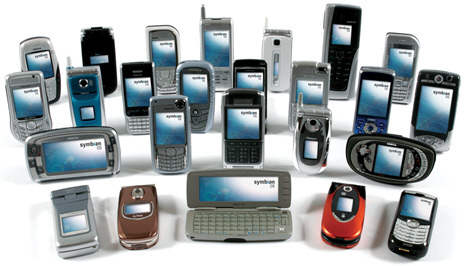Nokia Symbian deal winners and losers


After an expansion phase that saw the introduction of the iPhone, Android, LiMo, and JavaFX Mobile, the mobile phone platform landscape is shrinking again. Nokia today announced it plans to spend $410 million to acquire the pieces of Symbian Ltd. that it doesn't already own, and then give it away as open source under the Eclipse Public License. If that weren't enough, they got several of their competitors to chip in their own front-end assets and join a new Symbian Foundation that will provide overall governance to the combined project.
At first the Symbian Foundation will simply repackage the existing software and assets, allowing it to produce product right out of the gate next year. Everything won't be open source from day one. But eventually the differing interfaces will be unified, and within 2 years we should expect to see a single open-source platform supported by all the Foundation members. You can read the details on the Foundation's web site.
So who does this deal benefit or hurt the most? How will this affect the iPhone, Android, and other mobile platforms? Read on to find out...
Winners
Developers stand to benefit from this or any consolidation in the industry, because the fewer platforms they have to target the better.
Nokia gets a big PR boost, in addition to more leverage in setting the future direction for Symbian. Of course they were pretty much setting the direction anyway so that's not a big change for them. Nokia's biggest benefit may be in the protection of their Symbian investment in the face of recent competition (especially from Linux-based alternatives).
Sony Ericsson, Motorola, and NTT DoCoMo will save development resources by reusing what the Foundation provides, though they may lose some ability to differentiate between each other.
The Eclipse Foundation gets a gold star, since Nokia will be using the Eclipse Public License (EPL) for its software and will likely look to Eclipse's governance model when crafting their own. EPL is similar to the Apache license used by Android, because both allow OEMs and carriers the freedom to make proprietary extensions (or not) if they so choose (as opposed to the GNU Public License which forces everything to remain open and modifiable).
Adobe, after being rebuffed by Apple and Google and RIM and ... gets a more solid partner and host platform for Flash in the Symbian Foundation. Piece of advice to Adobe: If you want to be ubiquitous on mobile like you are on the desktop, release your player as open source using an EPL/MPL/LGPL or Apache license. Get it bundled with WebKit builds if you can.
In theory, users of the phones may notice an improved user experience over time as applications become more consistent with each other and programmers concentrate on fewer platforms. But given there are still so many different platforms out there, and carriers will be customizing things, I'm not sure there will be that much effect.
Losers
Sun will find it even harder to push their JavaFX Mobile phone stack, although they'll claim that since Symbian runs Java ME applications it can run JavaFX Script applications. This is just lipstick on a pig, though, as the more innovative and interactive apps will always be created with either native interfaces or (increasingly) Web based interfaces.
Palm, and to a lesser extent RIM (Blackberry), will feel the pinch from the revitalized Symbian, the iPhone, and Android platforms. I wouldn't be surprised to see these two players jump on one of the other bandwagons at some point; perhaps Palm to LiMo and RIM to Android.
LiMo gets one more reason not to exist with this new Foundation. Although the idea of Linux on the phone is a fine one, the organization has thus far been unable to deliver a coherent strategy or appeal.
Google, Android, and the Open Handset Alliance would have been better off without this deal as they'll face a stronger competitor now. Without the Symbian Foundation, Symbian was running the risk of fading away in a few years as developers and manufacturers jumped ship to arguably better and more modern alternatives. Now, Symbian's lifetime is extended and its installed base will remain a mindshare draw for developers for that much longer. Additionally, the timing of the announcement, following on the heels of yesterday's Android "delay" couldn't have been worse.
Draw
Apple couldn't care less about the new partnership. They'll continue to do their own thing, as usual, and enjoy a loyal niche audience at the higher end of the market, thank you very much.
Microsoft will likewise be unaffected. Neither Apple or Microsoft will feel the need to partner with the others, instead seeing themselves as leaders of their own packs. Deep pockets will allow Microsoft to continue plugging away for as long as they want to, but as with the Zune and XBox it's unlikely they'll be able to establish anything approaching market dominance.